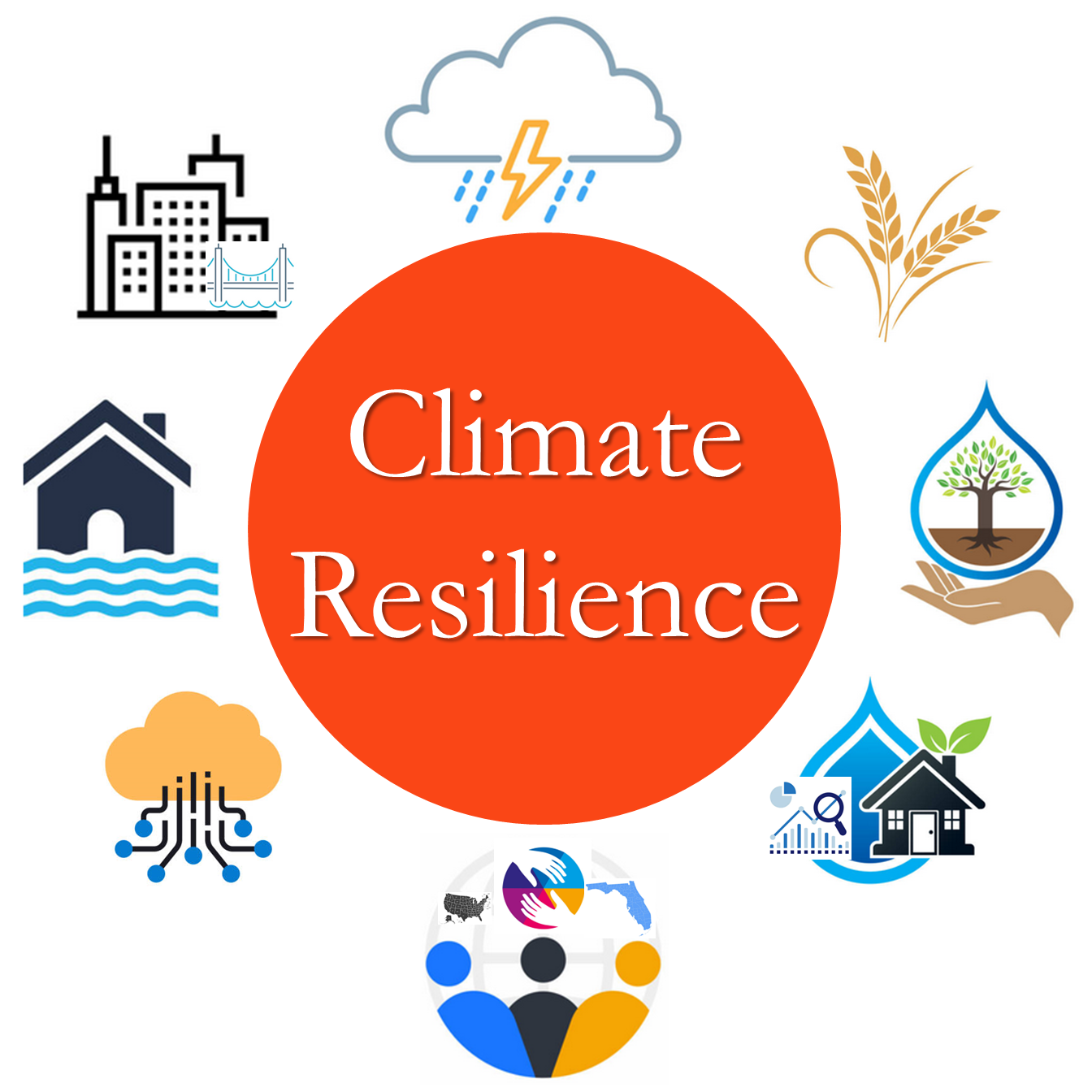Welcome to Climate Resilience Lab!
We work on enhancing climate risk assessments and disaster resilience in built and environmental systems.
Dr. Najibi’s Research Group focuses on understanding multisector, deeply uncertain, and dynamic climate risks to enhance system resilience and adaptation to multi-hazards evolving with the changing environment.
Our interdisciplinary, mission-driven research tackles a broad spectrum of challenges, from evaluating the risks of extreme weather events (e.g., floods, droughts, rainstorms, heat waves) to enhancing climate resilience and developing robust planning and management strategies that can adapt to a changing environment and anthropogenic landscape transformations.

The ultimate goal of our Lab is to develop knowledge and tools to address the pressing challenges of evolving risks and foster more resilient communities and sustainable interconnected systems (built, natural, and human) capable of withstanding and adapting to the multifaceted impacts of a rapidly changing climate and environment across different scales.
What we do
Our focus is on improving traditional perspectives centered on multi-scale hydroclimate systems analysis under three synergistic core areas:
1) Understanding the climate risks associated with natural and built environments exposed to hydroclimate extremes (e.g., floods, droughts, extreme precipitation events, heat/coldwaves)
2) Adapting stochastic models and decision analystics to enhance climate resilience in infrastructure systems and ecosystems in response to hydroclimate variability and unexpected changing climate impacts
3) Integrating process-based insights with ensemble-based frameworks to assess the climate vulnerability of critical infrastructure sectors (e.g., dams, transportation, energy, food/agriculture, emergency services, financial services, water/wastewater, and healthcare/public health systems) and the public well-being.
Why we do
In the United States, many infrastructure systems are aging, with critical components nearing or exceeding their intended lifespans, making them particularly vulnerable to climate-related stresses. These systems together with ecosystems and other urban/sub-urban systems may lack the resilience needed to cope with the increased frequency and intensity of extreme weather events.
Climate variability and uncertain shifts in climate systems (e.g., unexpected weather patterns) both present society with significant economic, security, health, and safety challenges. In this case, climate risk coordinators and planners must then prepare for the increased stress of a changing environment, but significant uncertainty remains about how the climate will evolve in the coming decades. While most climate projections agree that the future will be warmer with intensified extremes, the rate of these changes is less certain, as are more nuanced shifts such as changes in the average course of extreme weather events (e.g., frequency, duration, intensity) or alterations in atmospheric patterns that could interact with the regional conditions (e.g., land use, land changes, urbanizations).
Moreover, infrastructure systems are highly vulnerable to natural climate variability -independent of multiscale shifts in the weather patterns. These natural fluctuations must also be accounted for in both short- and long-term planning, highlighting the urgent need to reassess factsheets and adaptation strategies to ensure resilience against a wider range of potential climate risks.
Where we are
We are in the Dept. of Agricultural and Biological Engineering (ABE), and affiliated with the Center for Land Use Efficiency (CLUE) within the Institute of Food and Agricultural Sciences (IFAS) at the University of Florida (UF).
Address: 261 Frazier-Rogers Hall, 1741 Museum Rd, Gainesville, FL 32611
P.O. Box: 110570
Phone: 352-294-6739

